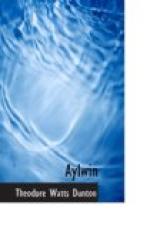And then followed my father’s comments on the extract.
’N.B.—To see and hear a crwth, if possible, and ascertain the true nature of the vibrations. But there are said to be only a few crwths in existence; and very likely there is no musician who could play upon them.’
Then followed a few sentences written at a later date.
’The crwth is now becoming obsolete; on inquiry I learn that it is a stringed instrument played with a bow like a violin; but as one of the feet of the bridge passes through one of the sound-holes and rests on the inside of the back, the vibrations must be quite unique, if we remember how important a part is played by the back in all instruments of the violin kind. It must be far more subtle than the vibrations of the Welsh harp, and even more subtle (if also more nasal) than those of the violin.
’The reason why music has in all ages been called in to aid in evoking the spirits, the reason why it is as potent now as ever it was in aiding the spirits to manifest themselves, is simple enough: the rhythmic vibrations of music set in active motion the magnetic waves through whose means alone the two worlds, spiritual and material, can hold communication. The quality and the value of these vibrations depend mainly, no doubt, upon the magnetic power, conscious or other, of the musician, but partly also upon the kind of instrument used. The vibrations awakened by stringed instruments have been long known to be more subtle than any others: instruments of the violin kind are of course the most subtle of all. Doubtless this is why among the Welsh hills the old saying used to be “The spirits follow the crwth."’
‘Which folly is the more besotted,’ I said, as I read and re-read the marginalia—’that of the scholar with his scientific nonsense about vibrations, or that of the ignorant Gypsy with her living mullos drawn through the air by music and love?’
But now my eyes fell upon a very different kind of marginal note which ran thus:—
’The one important fact of the twentieth century will be the growth and development of that great Renascence of Wonder which set in in Europe at the close of the eighteenth century and the beginning of the nineteenth.
’The warring of the two impulses governing man (and probably not man only, but the entire world of conscious life)—the impulse of acceptance, the impulse to take unchallenged and for granted all the phenomena of the outer world as they are, and the impulse to confront these phenomena with eyes of inquiry and wonder—will occupy all the energies of the next century.
’The old impulse of wonder which came to the human race in its infancy has to come back—has to triumph—before the morning of the final emancipation of man can dawn.
’But the wonder will be exercised in very different fields from those in which it was exercised in the past. The materialism which at this moment seems to most thinkers inseparable from the idea of evolution will go. Against their own intentions certain scientists are showing that the spiritual force called life is the maker and not the creature of organism—is a something outside the material world, a something which uses the material world as a means of phenomenal expression.




